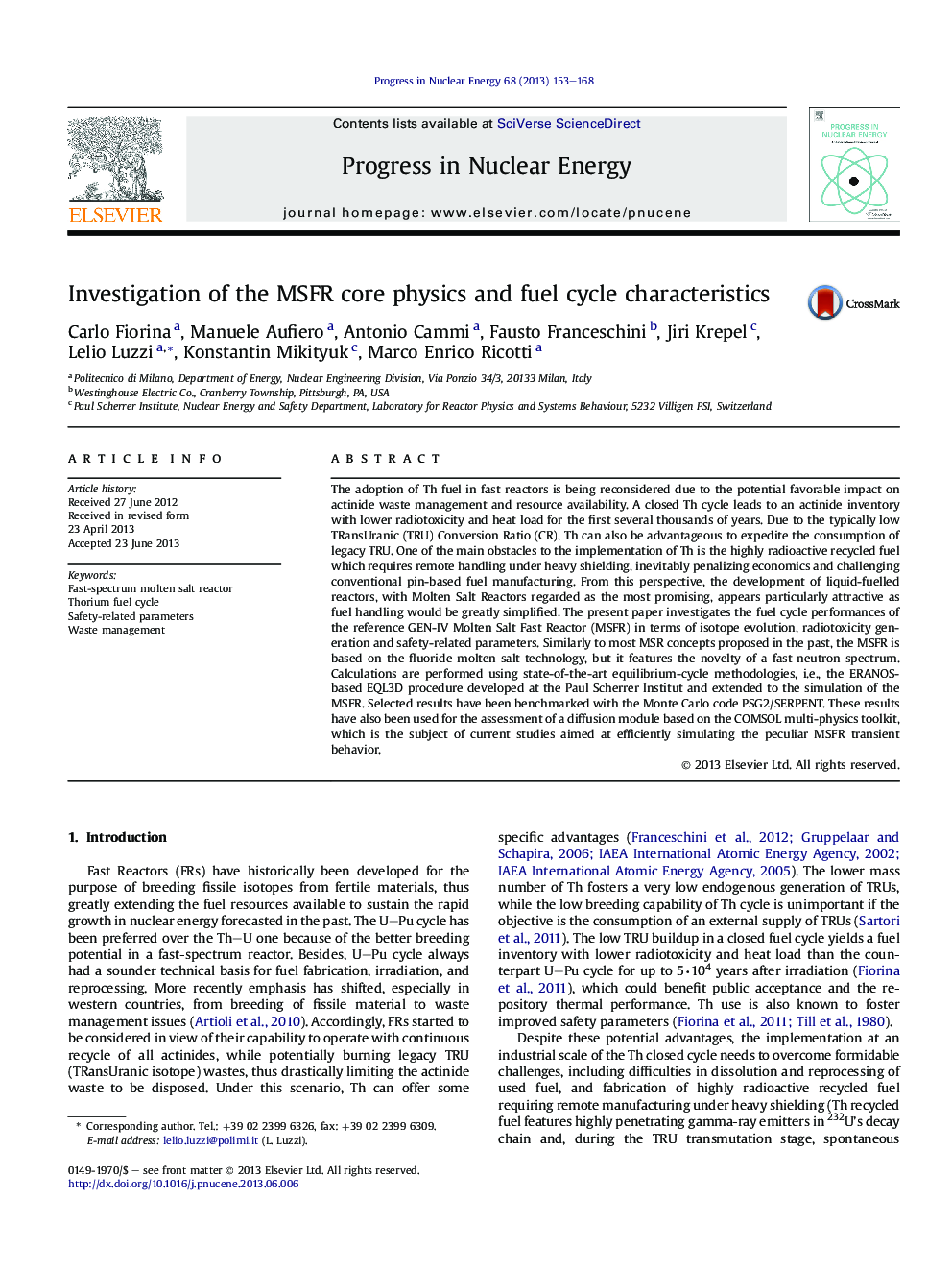| Article ID | Journal | Published Year | Pages | File Type |
|---|---|---|---|---|
| 1740894 | Progress in Nuclear Energy | 2013 | 16 Pages |
Abstract
The adoption of Th fuel in fast reactors is being reconsidered due to the potential favorable impact on actinide waste management and resource availability. A closed Th cycle leads to an actinide inventory with lower radiotoxicity and heat load for the first several thousands of years. Due to the typically low TRansUranic (TRU) Conversion Ratio (CR), Th can also be advantageous to expedite the consumption of legacy TRU. One of the main obstacles to the implementation of Th is the highly radioactive recycled fuel which requires remote handling under heavy shielding, inevitably penalizing economics and challenging conventional pin-based fuel manufacturing. From this perspective, the development of liquid-fuelled reactors, with Molten Salt Reactors regarded as the most promising, appears particularly attractive as fuel handling would be greatly simplified. The present paper investigates the fuel cycle performances of the reference GEN-IV Molten Salt Fast Reactor (MSFR) in terms of isotope evolution, radiotoxicity generation and safety-related parameters. Similarly to most MSR concepts proposed in the past, the MSFR is based on the fluoride molten salt technology, but it features the novelty of a fast neutron spectrum. Calculations are performed using state-of-the-art equilibrium-cycle methodologies, i.e., the ERANOS-based EQL3D procedure developed at the Paul Scherrer Institut and extended to the simulation of the MSFR. Selected results have been benchmarked with the Monte Carlo code PSG2/SERPENT. These results have also been used for the assessment of a diffusion module based on the COMSOL multi-physics toolkit, which is the subject of current studies aimed at efficiently simulating the peculiar MSFR transient behavior.
Keywords
Related Topics
Physical Sciences and Engineering
Energy
Energy Engineering and Power Technology
Authors
Carlo Fiorina, Manuele Aufiero, Antonio Cammi, Fausto Franceschini, Jiri Krepel, Lelio Luzzi, Konstantin Mikityuk, Marco Enrico Ricotti,
